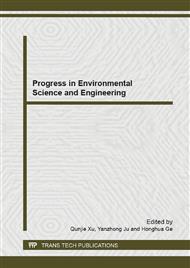p.1099
p.1103
p.1109
p.1113
p.1117
p.1121
p.1126
p.1130
p.1134
Life Cycle Inventory Analysis of Offshore Drill Cuttings Management Options
Abstract:
The disposal of the drill cuttings is a complex environmental problem. In the paper, two offshore drill cuttings management options are evaluated using life cycle inventory analysis, namely offshore reinjection and onshore solidification. Environmental burdens of the two management options are calculated. Results indicated that: a) From the life cycle perspective, treating 1 m3 drill cuttings, onshore solidification generate more CO2, CO, NOx, COD, TOC and Ammonia nitrogen than reinjection. On the contrary, reinjection generate more PM 2.5, PM10, SOx, Nitrate, and SS than solidification. Which option has less environmental impact needs further assessment. b) Selecting an environment-friendly curing agent is necessary for solidification process to reduce CO2 emissions.
Info:
Periodical:
Pages:
1117-1120
Citation:
Online since:
December 2012
Authors:
Keywords:
Price:
Сopyright:
© 2013 Trans Tech Publications Ltd. All Rights Reserved
Share:
Citation:


